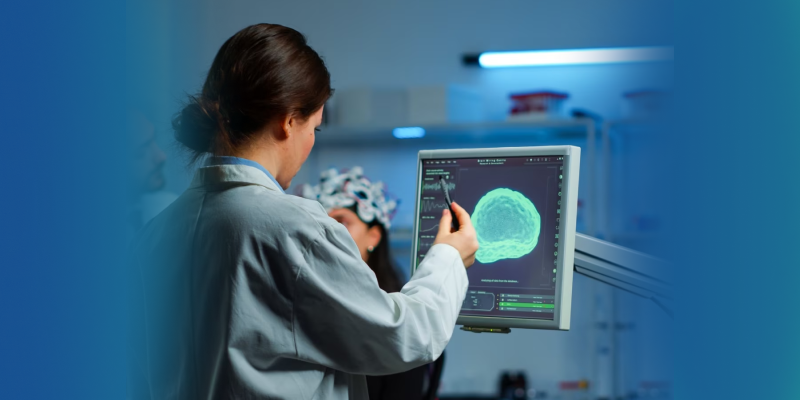Emerging Trends in Medical Imaging: Revolutionizing Diagnosis and Treatment

Medical imaging has undergone a transformative evolution, with technological advancements propelling the field into a new era of precision and diagnostic accuracy. This article explores the emerging trends in medical imaging, highlighting the revolutionary technologies that are reshaping the landscape of healthcare. From artificial intelligence (AI) integration to molecular imaging, these trends hold the promise of revolutionizing diagnosis, treatment planning, and patient outcomes.
I. The Rise of Artificial Intelligence in Medical Imaging
A. AI-assisted Diagnostics
- Deep Learning Algorithms:
- Description: Deep learning algorithms are revolutionizing image interpretation. AI systems can analyze medical images with unprecedented accuracy, assisting healthcare professionals in detecting subtle abnormalities and providing rapid, data-driven insights.
- Computer-Aided Diagnosis (CAD):
- Description: CAD systems have become integral in medical imaging. These tools, powered by AI, aid radiologists in identifying patterns and anomalies, reducing diagnostic errors, and improving the overall efficiency of the diagnostic process.
B. Predictive Analytics for Personalized Medicine
- Predictive Modeling:
- Description: AI algorithms analyze imaging data alongside clinical and genomic information to create predictive models. These models help in forecasting disease progression, determining optimal treatment strategies, and personalizing healthcare interventions based on individual patient profiles.
- Radiomics and Radiogenomics:
- Description: Radiomics involves extracting quantitative features from medical images, while radiogenomics explores the correlation between imaging features and underlying genetic characteristics. Integrating these data sets with AI enables a comprehensive understanding of disease biology, guiding tailored treatment plans.
II. Advancements in Imaging Modalities
A. Functional and Molecular Imaging
- PET-MRI Hybrid Imaging:
- Description: The fusion of Positron Emission Tomography (PET) and Magnetic Resonance Imaging (MRI) offers a synergistic approach. This hybrid imaging modality provides both anatomical and functional information, enhancing the precision of disease localization and characterization.
- Molecular Imaging Probes:
- Description: Molecular imaging probes target specific biological markers, enabling the visualization of molecular processes within the body. This technology holds immense potential for early detection, monitoring treatment response, and guiding targeted therapies.
B. Advanced Computed Tomography (CT) Techniques
- Dual-Energy CT:
- Description: Dual-energy CT enhances tissue characterization by acquiring images at different energy levels. This technology improves the detection of subtle abnormalities and contributes to more accurate diagnoses in areas such as oncology, cardiology, and musculoskeletal imaging.
- Cone Beam CT in Interventional Radiology:
- Description: Cone Beam CT provides real-time, three-dimensional imaging during interventional procedures. This advancement aids in precise navigation, allowing clinicians to visualize and target lesions with enhanced accuracy.
III. Imaging at the Nanoscale: Nanotechnology in Medicine
A. Nanoparticle Imaging Agents
- Nano-sized Contrast Agents:
- Description: Nanoparticles designed as contrast agents enhance the visibility of specific tissues or pathological regions. These agents, when coupled with imaging modalities, facilitate high-resolution imaging at the cellular and molecular levels.
- Theranostic Nanoparticles:
- Description: Theranostic nanoparticles serve a dual purpose by combining diagnostic imaging with therapeutic capabilities. This convergence allows for targeted drug delivery, image-guided interventions, and real-time monitoring of treatment response.
IV. Telemedicine and Remote Imaging
A. Remote Diagnostic Imaging
- Tele-radiology Services:
- Description: Tele-radiology enables the remote interpretation of medical images by experts located anywhere in the world. This technology addresses the shortage of radiologists in certain regions, ensuring timely and accurate diagnoses.
- Mobile Imaging Units:
- Description: Mobile imaging units equipped with advanced imaging technologies bring diagnostic capabilities to underserved or remote areas. These units contribute to early detection and intervention, promoting equitable access to healthcare resources.
V. Ethical Considerations and Challenges
A. Data Security and Patient Privacy
- Secure Transmission of Imaging Data:
- Description: The transmission of medical imaging data, especially in telemedicine settings, raises concerns about data security. Implementing robust encryption and secure transmission protocols is crucial to safeguard patient information.
- Informed Consent for AI-assisted Diagnostics:
- Description: As AI plays a more significant role in medical diagnostics, ensuring patient understanding and consent for AI-assisted interpretations become ethical imperatives. Transparent communication about the collaborative role of AI in the diagnostic process is essential.
B. Equity in Access and Technological Divide
- Global Disparities in Imaging Technology:
- Description: Disparities in access to advanced imaging technologies exist globally. Addressing these inequities requires concerted efforts to ensure that emerging imaging trends benefit all populations, regardless of geographical location or economic status.
- Technological Literacy:
- Description: The integration of complex imaging technologies necessitates technological literacy among healthcare professionals. Continuous education and training programs are essential to empower practitioners in harnessing the full potential of emerging imaging modalities.
VI. Future Perspectives: Towards Precision Healthcare
A. Integration of Multi-omics Data
- Multi-modal Data Fusion:
- Description: Integrating imaging data with multi-omics information, including genomics, proteomics, and metabolomics, offers a holistic view of disease processes. This integrated approach holds promise for developing comprehensive and personalized therapeutic strategies.
- Big Data Analytics in Imaging:
- Description: The accumulation of vast datasets from diverse imaging modalities requires advanced analytics. Big data analytics can unravel complex patterns, contributing to the identification of novel biomarkers, drug targets, and treatment response predictors.
B. Patient-Centric Imaging Solutions
- Interactive Patient Engagement:
- Description: Empowering patients with access to their imaging data and involving them in the decision-making process enhances patient-centric care. Interactive platforms that allow patients to understand and participate in their diagnostic journey contribute to improved healthcare outcomes.
- Virtual Reality in Medical Imaging:
- Description: Virtual Reality (VR) applications provide immersive experiences for both healthcare professionals and patients. In medical imaging, VR facilitates interactive visualization of complex anatomical structures, aiding in surgical planning and patient education.
VII. Conclusion
The landscape of medical imaging is undergoing a paradigm shift, driven by unprecedented technological innovations. The integration of AI, advancements in imaging modalities, nanotechnology applications, and the rise of telemedicine collectively represent a transformative era in healthcare. As these emerging trends continue to unfold, the potential for early and precise diagnosis, personalized treatment strategies, and improved patient outcomes becomes increasingly tangible. Ethical considerations and the pursuit of equitable access remain paramount as we navigate the evolving terrain of medical imaging, ultimately ushering in a new era of precision healthcare.







